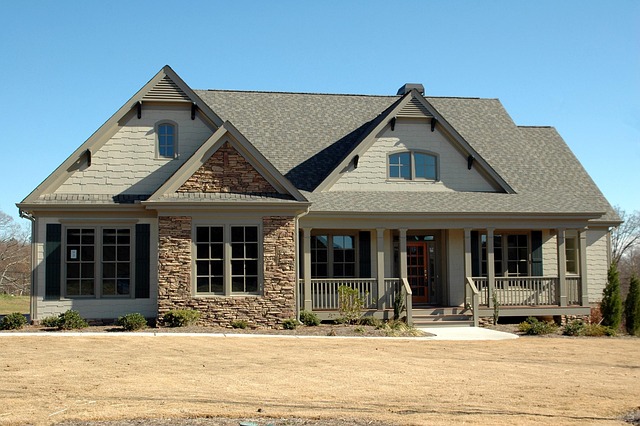Home improvement financing for contractors offers a win-win solution, benefiting both professionals and homeowners. Contractors gain access to capital for diverse projects, expanding their services and revenue potential while easing cash flow concerns. Homeowners can undertake necessary renovations without large upfront costs. Various flexible options, from conventional loans to government programs and lines of credit, cater to different needs. A structured application process involves detailed documentation for lender assessment. Successful loan management requires strategic budgeting, meticulous record-keeping, and transparent communication with stakeholders, ensuring a smooth journey through home improvement financing for contractors.
Looking to fund your next home improvement project but need contractor financing? This comprehensive guide breaks down everything you need to know. From understanding the basics of home improvement loans for contractors to exploring various financing options, we’ll walk you through the process. Learn about the benefits, key types available, and crucial application requirements. Plus, discover strategies for effective loan management to ensure a smooth and successful renovation journey.
- Understanding Contractor Financing for Home Improvements
- Benefits of Utilizing Contractor Financing
- Types of Financing Options Available
- The Application Process and Requirements
- Strategies for Effective Loan Management
Understanding Contractor Financing for Home Improvements

Contractor financing for home improvements is a valuable option for both professional contractors and homeowners seeking to enhance their living spaces. This type of financing allows contractors to secure funding for projects, enabling them to take on more work and better serve their clients. Homeowners benefit from having access to capital, allowing them to embark on much-needed renovation projects without the immediate strain of large cash outlays.
Understanding contractor financing involves grasping how it works and the various options available. Many financial institutions and specialized lenders offer programs tailored for contractors, featuring flexible terms and competitive rates. These financing solutions can cover a wide range of home improvement projects, from simple repairs to complex renovations. By exploring these financing opportunities, contractors and homeowners alike can transform their properties into vibrant, updated spaces while managing cash flow effectively.
Benefits of Utilizing Contractor Financing

Utilizing contractor financing for home improvements offers numerous benefits, especially for businesses looking to expand their projects and client base. Firstly, it provides access to capital, enabling contractors to take on larger jobs that might otherwise be out of reach due to funding constraints. This can lead to increased revenue and opportunities for growth. With tailored financing options, contractors can focus more on delivering quality services without the added stress of managing cash flow during projects.
Additionally, contractor financing allows for more flexibility in project management. Contractors can negotiate better terms with suppliers and vendors when they have secure funding in place, potentially saving them time and money. This, in turn, can lead to happier clients as projects are completed efficiently and within agreed-upon budgets. It’s a win-win situation that can set contractors apart in a competitive market, fostering long-term success and client satisfaction in the realm of home improvement financing for contractors.
Types of Financing Options Available

When it comes to funding home improvements, contractors have a variety of options to consider. From traditional loans to specialized financing programs, there’s a solution for every budget and project scope. One popular choice is home improvement financing for contractors, designed specifically to cater to the unique financial needs of professional remodeling experts. These financing options often offer flexible terms, allowing contractors to secure the necessary funds without disrupting their cash flow.
Contractors can opt for conventional loans from banks or credit unions, which typically require a good credit history and offer fixed interest rates. Alternatively, they may explore government-backed loans like FHA 203(k) or VA renovation loans, ideal for specific projects that enhance home accessibility or safety. For smaller, more manageable expenses, lines of credit or credit cards provide quick access to capital without the need for collateral. These home improvement financing for contractors options can be particularly beneficial when dealing with unforeseen costs or project revisions.
The Application Process and Requirements

When a contractor seeks home improvement financing for contractors, the application process involves several key steps and requirements. Firstly, they must compile comprehensive documentation detailing their business structure, financial history, and project scope. This includes tax returns, bank statements, and detailed proposals for the improvements to be made. The lender will assess these documents to gauge the contractor’s creditworthiness and the feasibility of the project.
In addition to these foundational documents, contractors should expect to provide specific details about the home improvement projects they plan to undertake. This may include blueprints, cost estimates, and timelines. Lenders want to ensure that the financing is for legitimate, well-planned projects with a clear path to completion and potential return on investment. Therefore, transparency and thoroughness throughout the application process are paramount for contractors seeking home improvement financing for contractors.
Strategies for Effective Loan Management

Effective loan management is a cornerstone for contractors looking to succeed in home improvement financing. One key strategy involves creating a detailed budget that allocates funds across various project expenses, ensuring no overspending and maintaining financial discipline. Regularly tracking progress against this budget enables contractors to identify any deviations early on, allowing them to make necessary adjustments to stay on track.
Additionally, staying organized with documentation is vital. Keeping meticulous records of all financial transactions, including invoices, receipts, and payment histories, simplifies the reporting process and facilitates transparency when dealing with lenders or clients. This organization also aids in forecasting future projects, as contractors can analyze past performance to set realistic budgets and expectant outcomes for upcoming home improvement financing endeavors.
Contractor financing for home improvements offers a viable path for both professionals and homeowners. By understanding the benefits, exploring diverse financing types, and adhering to effective management strategies, you can successfully navigate this process. Whether you’re looking to expand your business or enhance your living space, leveraging the right financing option can unlock opportunities and ensure a smoother, more rewarding experience.
